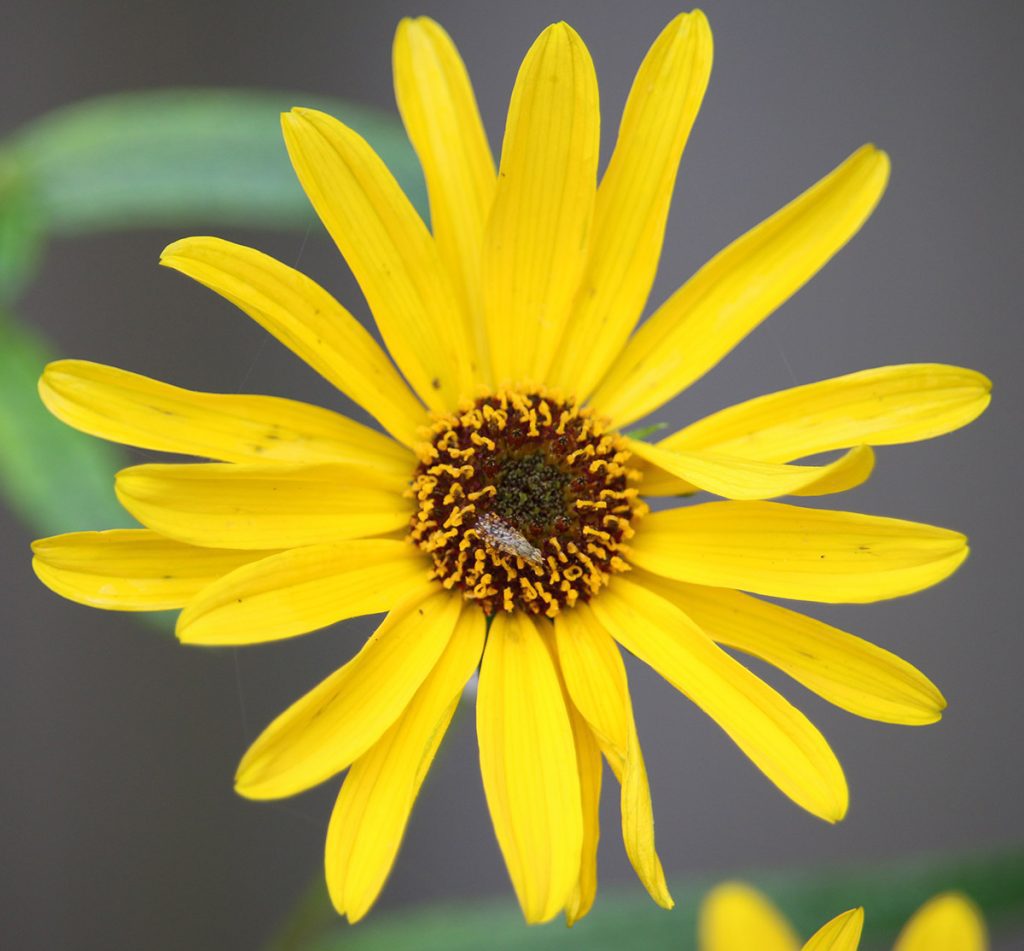Introducing WFSU Public Media’s big new springtime initiative: The EcoCitizen Project.
Subscribe to the WFSU Ecology Blog to receive more videos and articles about our local, natural areas, and subscribe to the WFSU Ecology Youtube Channel.
Rob Diaz de Villegas WFSU Public Media
This Saturday, I’m passing out milkweed seeds at the library. The packets are a mix of flowers, actually, that would provide both nectar and larval food for butterflies. Come on down- I’ll be at the main branch of the Leroy Collins library between 10 am and 2 pm for Be My Neighbor Day. I’ll be with some other nature people, many of whom you’ve seen on the blog. You can meet a striped newt, learn about iNaturalist, and then pick up some seeds. And when I hand you that seed packet, you’ll find that it’s also an invitation for something called EcoCitizen Day. EcoCitizen Day will be a big outdoor event, a kind of a biological scavenger hunt at Lake Elberta in Tallahassee and in the Apalachicola National Forest. So, what does that have to do with the seeds you planted in your garden? 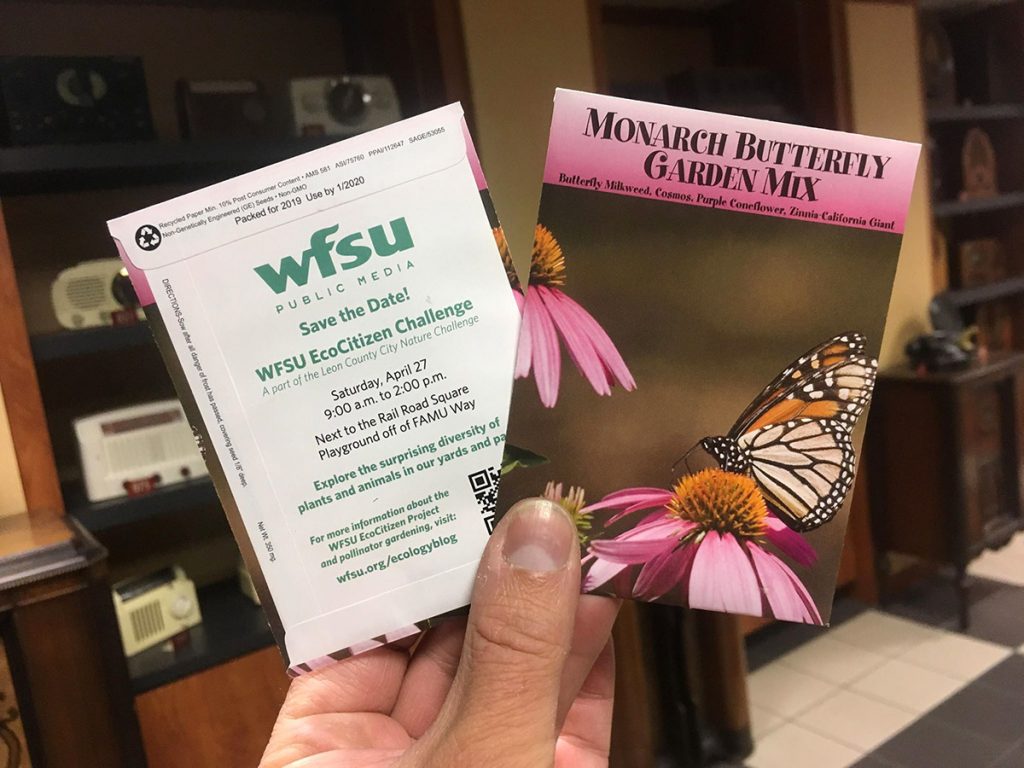
The WFSU EcoCitizen Project aims to connect you with wildlife in your yard, city parks, the forest, and on your phone. How much you do is up to you- you can be as passive or as involved as you care to be. You don’t have to trek deep in the woods to get mucky in a wetland. Unless you want to.
In a sense, the project culminates with this big event on April 27. But it won’t end there. The EcoCitizen themes will continue to be woven into our content after that. But we do want a big turnout on the big day. So come on down! Here are the basics:
EcoCitizen Day
- When: April 27 from 9 am to 2 pm.
- Where: Home base is in the space next to the Capital Cascades Trail Park (the FAMU Way playground). We’ll have kids activities and entertainment there. From there, you can take a short walk to Lake Elberta, or board a shuttle to the Munson Sandhills region of the Apalachicola National Forest or to San Luis Park.
- Who: WFSU Public Media’s main partners are the Coastal Plains Institute and Florida Fish and Wildlife Conservation Commission. Additionally, we’re partnering with City of Tallahassee Parks and Recreation, Apalachee Audubon Association, Tall Timbers Research Station and Land Conservancy, North American Butterfly Association (Hairstreak Chapter), and Florida Native Plant Society (Magnolia Chapter). This list may grow.
- What: We’re celebrating citizen science and seasonal change in two ways. The first is participating in the City Nature Challenge. We’re competing with over 100 different cities to see who can log the most wildlife observations using the iNaturalist app. The Challenge runs from April 26 through 29, and EcoCitizen Day is going to be the major event. We’re also going to get people down to dipnet ephemeral wetlands in the Munson Sandhills with the Coastal Plains Institute. If you’ve followed our blog, you know about their Adopt an Ephemeral Wetlands and Striped Newt Repatriation programs.
Stay up to date with everything EcoCitizen Day by visiting our Facebook Event.
So, on our big day, you can spend some time snapping photos of flowers and ducks in a city park. Or, you can walk out into an ephemeral wetland and go looking for salamanders in the muck. It’s up to you. But where do the seeds come in, you may ask? For that answer, we’ll look at the three pillars of the EcoCitizen Project:
1. Building a Home Habitat
The City Nature Challenge runs for four days, and observations from anywhere in Leon County count. This includes the bees and butterflies buzzing around the wildflowers in your yard, or the birds at your feeder. It’s not just about the competition, of course. What we’re trying to promote is a yard that invites wildlife. Recent research shows that birds are declining in urban areas due to a lack of native plants.
Native plants attract native insects, the animals that have been eating them long before there was a Tallahassee. And birds eat those insects. Check out the other blog post I wrote this week. It’s about raising butterfly caterpillars, though I also share some photos of moth caterpillars. Flowers attract pollinators, but larval food plants (like the milkweed in that seed packet) host caterpillars, and ensure the continuation of those species. And those caterpillars will feed a lot of birds. Look for more content on creating a home ecosystem on the blog coming up. And you can take a look at some of our previous content on butterflies and pollinator gardening. It’s a topic I like to write about.
2. Engaging in Citizen Science
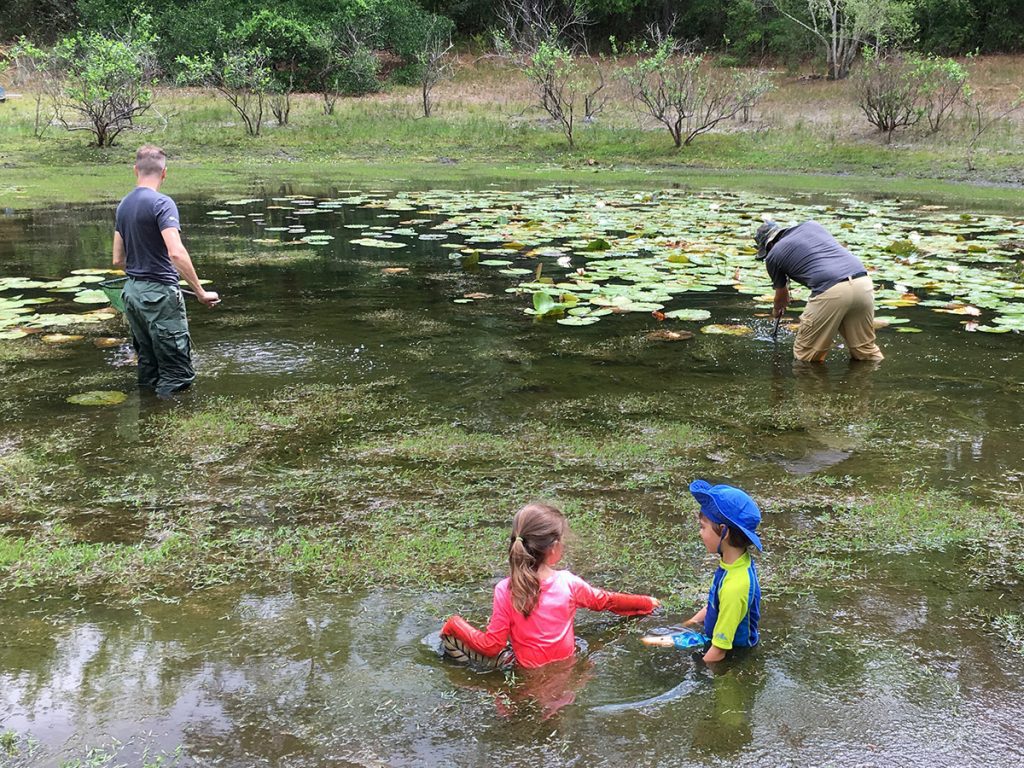
Dylan and Max squat in the mud and watch their dads net their ephemeral wetland in the Apalachicola National Forest.
I build that home ecosystem because I like seeing wildlife in the yard. Caterpillars grow to butterflies, or get carried off by wasps, right in front of your eyes. But, try as I might, my yard can’t match the wildness of the Apalachicola National Forest.
That’s part of the reason I signed my family up to participate in the Adopt an Ephemeral Wetland program. We go out a few times a year with a couple of other families, dipnet ephemeral wetlands in the forest, and record the frogs and salamanders we find. The Coastal Plains Institute takes this information and get a sense of what is breeding when, and in what part of the Munson Sandhills region of the forest. It’s a fun activity for families looking for a different way to engage with nature. But it also allows CPI to survey dozens of wetlands without having to hire dozens of lab technicians, which would be expensive.
This kind of crowdsourcing of data collection is known as citizen science. We’re covering a few different citizen science initiatives as part of EcoCitizen. The two main ones are Adopt an Ephemeral Wetland and iNaturalist. In a lot of ways, iNaturalist can seem more like a video game than a research tool. But that’s the beauty of it. Like me, you might get hooked and start taking photos of every little bird, bug, or flower you see. But some of those species or the areas you visit might be a part of a research project someone has set up in iNaturalist. Many projects target invasive species, and so when I snap a photo of coral ardisia, it’s part of a project mapping that plant in Florida.
Research dollars aren’t always as plentiful as they should be. But there are enjoyable ways that we as outdoors enthusiasts can help. For a better look at the citizen science we’re covering as part of EcoCitizen, check out this page on the blog.
3. Learning About Seasonality
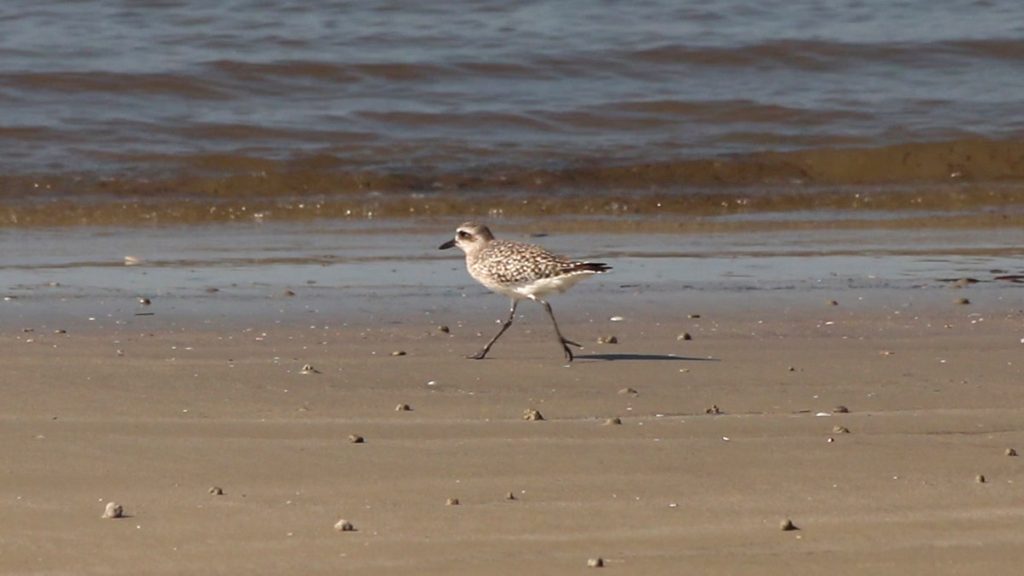
Black-bellied plover runs on beach. This is one of several different species of migratory shorebird we recorded at Alligator Point last September.
I’m going to drop a word on you: phenology. It’s a more formal word for seasonality, specifically the way in which changes in climate trigger changes in plants and animals.
At the beginning of fall, for instance, red knots leave the arctic for our local beaches. When they’re here, they’re kind of a dullish grey. When it starts to warm up, they fly back to breed, and their plumage changes to red and black and white. These changes in climate spur them to migrate and change their plumage.
In north Florida, we receive migratory birds at different times of year- swallowtail kites and wood storks arrive in the spring while shorebirds and ducks arrive in the fall. Plants bloom at different times of year- trout lilies in February, carnivorous plants in April and May, tupelo in May and June, etc. Striped newts in ephemeral wetlands breed in the winter and become mature in the spring. And on and on. Part of understanding our natural world is understanding what plants and animals should do at different times of the year.
Tying it All Together
Citizen science can help us track seasonal change from year to year.
A couple of years ago we had a warm winter, and I had a ton of monarchs on my milkweed by March. Last year, a colder winter kept monarchs out of my yard until July (they were in the area earlier than that, but in not as great a number as the year before). Participating in the Monarch Larva Monitoring Project, which I started doing last fall, I can add data about the monarchs we’re raising at the house. If thousands of people do the same, we can see how and when the migration is happening.
And so you can see how these three themes come together. I started using iNaturalist in my garden. I like to let flowering weeds grow, but I found that one species that had become common in my yard was non-native. So I’m pulling it. Is this bug a beneficial soldier bug or a plant eating stinkbug? iNaturalist can be a tool to help me manage my garden.
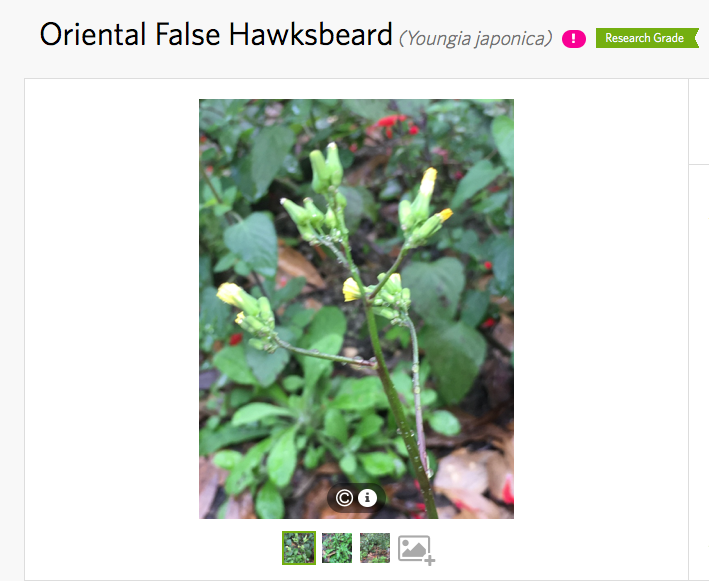
Screen shot of Oriental False Hawksbeard from my iNaturalist account. Note the exclamation point marking this as a nonnative species.
And here we get to the root of the WFSU EcoCitizen Project. It’s about finding new ways to connect to nature while furthering humankind’s understanding of it. And like EcoCitizen Day, you can be as passive or involved as you care to be. You can be on the phone, or in the wetland. You just need to go outside.

